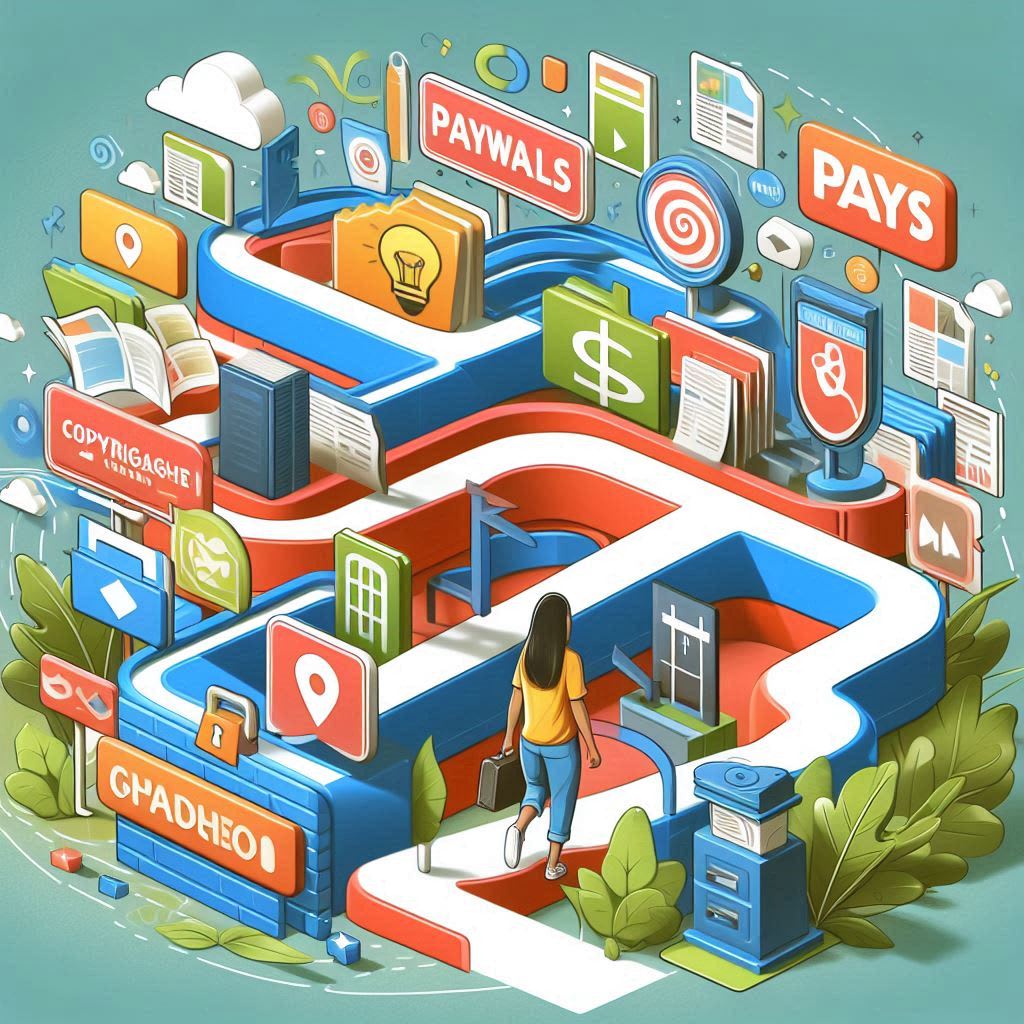Paywalls: Gatekeepers or Gateways?
Unveiling the Future of Paid Content

Paywalls: Gatekeepers or Gateways? Navigating the Evolving Landscape of Paid Content
The internet, once a seemingly boundless ocean of information, is increasingly dotted with digital tollbooths – paywalls. These barriers restrict access to premium content, sparking a heated debate about their impact on the flow of knowledge. But before we dive in, let's unpack what paywalls truly are.
Demystifying the Paywall
Imagine a website with exclusive investigative reports, insightful industry analyses, or high-quality documentaries. A paywall guards this content, requiring a subscription fee or a one-time purchase for access. Think of it as a selective filter, allowing only paying users to delve deeper.
The Rise of the Paywall
Traditionally, news and information were readily available online, funded primarily by advertising. However, the decline of print media and the rise of ad blockers forced publications to explore alternative revenue streams. Paywalls emerged as a potential solution, allowing publishers to charge for high-quality, in-depth content. This trend has extended beyond news, with academic journals, streaming services like Netflix with tiered plans, and even some social media platforms like exclusive content on Discord servers, adopting paywall models.
A Spectrum of Gatekeepers: Not All Paywalls Are Created Equal
Paywalls vary in their restrictiveness. Here's a breakdown of the most common types:
- Hard Paywall: This is the strictest gatekeeper, blocking all content except for headlines or snippets. You can't access anything without a subscription. (e.g., The Wall Street Journal)
- Metered Paywall: This allows a certain number of free articles per month (often 3-5 articles). Once you reach the limit, you need to subscribe to continue reading. (e.g., The Washington Post)
- Freemium Model (Both free and premium): This offers a limited selection of free content, with premium features or in-depth articles locked behind a paywall. (e.g., Spotify's free tier with limited skips and ads)
The Paywall Debate: A Double-Edged Sword
The rise of paywalls has sparked heated discussions. Let's explore the arguments for and against them:
Pros:
Quality Journalism: Paywalls allow publications to invest in investigative journalism, in-depth reporting, and expert analysis, leading to higher quality, fact-checked content.
Sustainability: Paywalls provide a financial model for content creators, ensuring the continued production of valuable information and investigative reporting.
Curated Content: Paywalled content can be more focused and targeted towards a specific audience, offering a more enriching experience tailored to their interests. (e.g., The Athletic focuses on in-depth sports journalism)
Cons:
Limited Access: Paywalls can create an information gap, restricting access to knowledge for those who cannot afford subscriptions. This can exacerbate social inequalities and hinder equal access to information.
Echo Chambers: Paywalls can inadvertently create echo chambers, where users only access information that reinforces their existing beliefs. This can limit exposure to diverse perspectives and hinder critical thinking.
Discovery and Sharing: Paywalls can make it difficult to discover new content and hinder the free flow of information online. Sharing snippets or summaries of paywalled content can be restricted, limiting virality and organic reach.
The Future of Paywalls: Beyond the One-Size-Fits-All Model
The future of paywalls is likely to be more nuanced than a simple on or off switch. We can expect to see continued innovation, with several trends emerging:
Personalized Subscriptions: Platforms may offer customizable subscription options, allowing users to choose the specific content creators or publications they want to support, rather than a blanket subscription.
Microtransactions: Pay-per-article models or micropayment systems could emerge, allowing users to pay for individual pieces of content they find particularly interesting, instead of a full subscription. (e.g., Apple News offers article purchases)
Tiered Access: Subscription tiers with varying price points could be offered, with basic access at a lower cost and premium features or exclusive content available at higher tiers. (e.g., The New York Times offers basic and premium subscription options)
Finding Your Way Through the Paywall Maze
So, how do you navigate this evolving landscape of paid content? Here are some tips:
Utilize Free Resources: Many libraries offer free access to online databases and publications. You can also explore public domain resources and utilize search engine filters to find freely available content.
Be Strategic with Subscriptions: Choose subscriptions that align with your specific interests and budget. Consider taking advantage of free trial periods to test out different paywalled content before committing.
Follow Social Media: Many publications offer insightful excerpts, summaries, or teasers of paywalled content on their social media platforms. This allows you to stay informed about key topics without necessarily needing a subscription.
Support Independent Creators: Look for platforms like Patreon that allow you to directly support independent creators producing valuable content, giving you access to exclusive materials or early releases.
Beyond the Paywall: Addressing Equity and Transparency
The paywall debate extends beyond just user experience. Concerns about information equity and transparency remain. Here's how we can address these issues:
Library Partnerships: Public libraries could expand their role by offering patrons access to paywalled content through subscription bundles, similar to how they currently provide access to academic journals. This would bridge the gap for those who may not be able to afford individual subscriptions.
Income-Based Subscriptions: Publications and platforms could explore tiered subscription options with lower costs for students, educators, or low-income individuals. This ensures broader accessibility to valuable information without compromising content quality.
Transparency in Pricing and Content: Paywall structures should be clear and transparent. Users deserve to understand exactly what content is included in each subscription tier and pricing model. This empowers them to make informed decisions about their content consumption habits.
The Path Forward: A Balanced Ecosystem
Ultimately, the success of paywalls relies on striking a delicate balance between:
Financial Sustainability for Creators: Content creators deserve fair compensation for their work. Paywalls offer a potential solution to ensure the continued production of high-quality information.
Accessibility for Readers: Everyone deserves access to valuable information, regardless of their socioeconomic background. Initiatives like library partnerships and income-based subscriptions can help bridge the information gap.
The Continued Flow of Information: The free flow of knowledge and ideas is essential for a healthy democracy. Open access initiatives and creative paywall models can help maintain this flow.
By embracing innovation, prioritizing user experience, and addressing concerns about information equity, paywalls can evolve into a model that benefits both creators and consumers.
This future envisions a world where flexibility reigns supreme. Imagine a platform where you can pay for exactly the content you crave, whether it's a single, in-depth article on a specific topic you're researching, access to an exclusive online course, or a subscription to a niche publication catering to your specific interests. This microtransaction approach, coupled with initiatives like library partnerships and tiered subscriptions, can ensure that valuable information remains accessible while creators receive fair compensation for their efforts. Ultimately, the success of paywalls hinges on striking a delicate balance – one that fosters a healthy digital ecosystem where knowledge thrives and everyone has a seat at the information table.
About the Creator
suren arju
Hi there! I'm Suren, your startup guide. Entrepreneur, writer, dreamer - I share insights, tips & stories to fuel your startup journey. Ready to explore, learn & win together? Join me & let's redefine how we launch, learn & leap!
Enjoyed the story? Support the Creator.
Subscribe for free to receive all their stories in your feed. You could also pledge your support or give them a one-off tip, letting them know you appreciate their work.





Comments
There are no comments for this story
Be the first to respond and start the conversation.